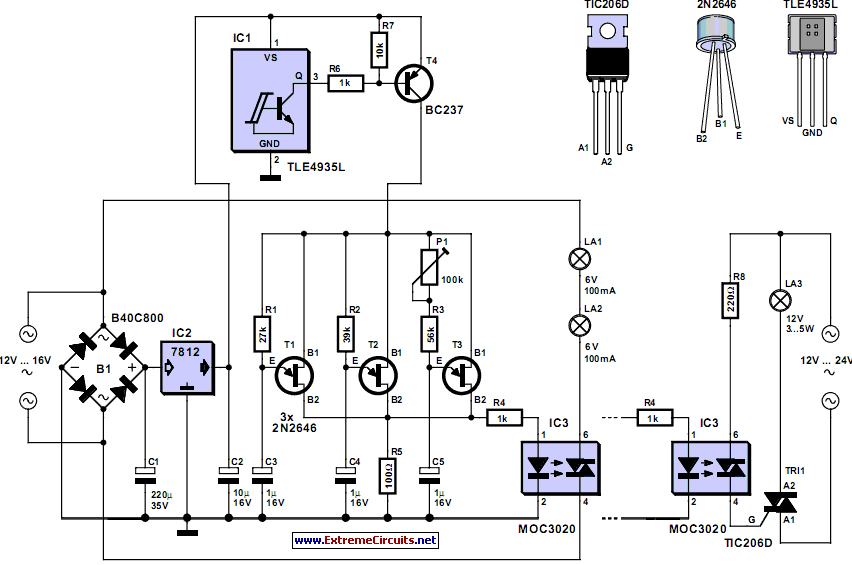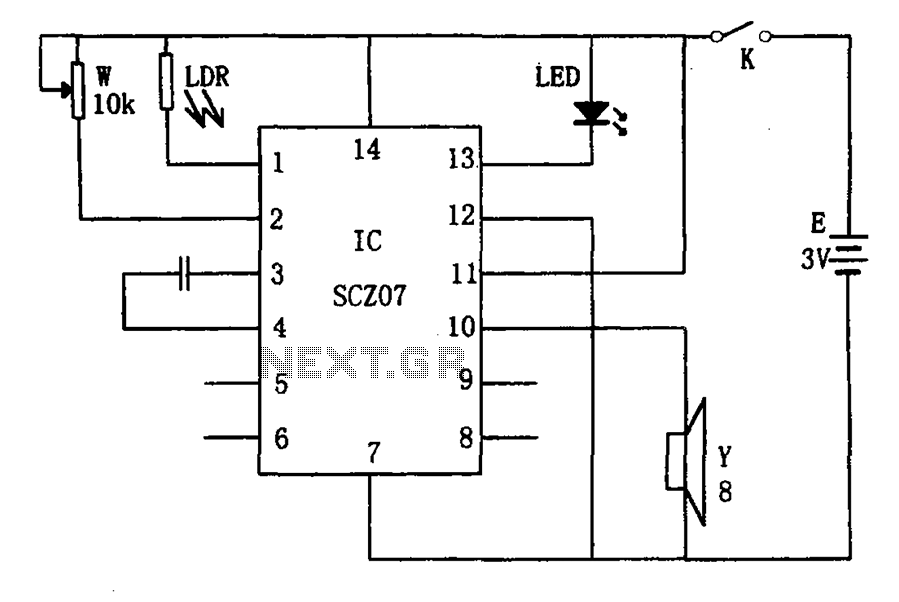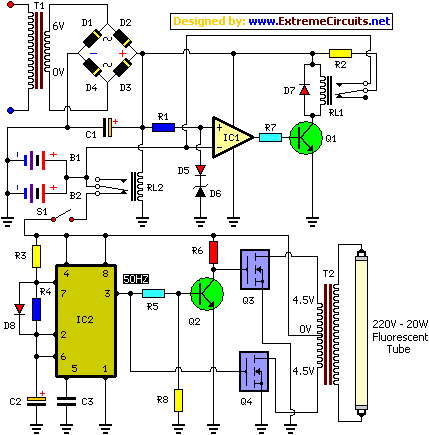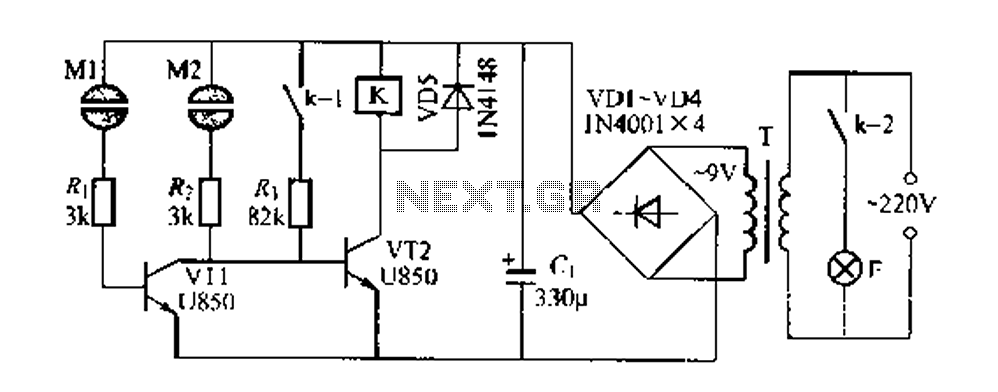
Flickering Light II

This circuit effectively simulates various types of flames, such as a house fire, a campfire, or welding light.
This circuit utilizes a combination of light-emitting diodes (LEDs) and a microcontroller to create realistic flame effects. The design typically includes multiple LEDs of different colors to represent the varying hues of fire. For instance, red, orange, and yellow LEDs can be arranged in a way that mimics the flickering and glowing nature of flames.
A microcontroller, such as an Arduino or similar, is programmed to control the brightness and the flickering pattern of the LEDs. This is achieved by using pulse-width modulation (PWM) to adjust the intensity of each LED. The microcontroller can be programmed with different algorithms to simulate the behavior of flames. For example, it can vary the brightness in a random manner to create a more natural and dynamic appearance.
Power supply considerations are also critical for this circuit. A suitable power source, such as a battery or an AC-to-DC adapter, must be selected to ensure that the circuit operates efficiently without overheating. Additionally, resistors should be included in the circuit to limit the current flowing through the LEDs, preventing damage and ensuring longevity.
In terms of assembly, the circuit can be laid out on a breadboard for prototyping or soldered onto a printed circuit board (PCB) for a more permanent solution. Proper heat management should be considered, especially if the circuit is intended for extended use.
Overall, this flame simulation circuit is versatile and can be adapted for various applications, including decorative lighting, stage effects, or educational demonstrations about fire behavior.Regardless of whether you want to effectively imitate a house fire, a campfire, or light from welding, the circuit described here fills the bill without u.. 🔗 External reference
This circuit utilizes a combination of light-emitting diodes (LEDs) and a microcontroller to create realistic flame effects. The design typically includes multiple LEDs of different colors to represent the varying hues of fire. For instance, red, orange, and yellow LEDs can be arranged in a way that mimics the flickering and glowing nature of flames.
A microcontroller, such as an Arduino or similar, is programmed to control the brightness and the flickering pattern of the LEDs. This is achieved by using pulse-width modulation (PWM) to adjust the intensity of each LED. The microcontroller can be programmed with different algorithms to simulate the behavior of flames. For example, it can vary the brightness in a random manner to create a more natural and dynamic appearance.
Power supply considerations are also critical for this circuit. A suitable power source, such as a battery or an AC-to-DC adapter, must be selected to ensure that the circuit operates efficiently without overheating. Additionally, resistors should be included in the circuit to limit the current flowing through the LEDs, preventing damage and ensuring longevity.
In terms of assembly, the circuit can be laid out on a breadboard for prototyping or soldered onto a printed circuit board (PCB) for a more permanent solution. Proper heat management should be considered, especially if the circuit is intended for extended use.
Overall, this flame simulation circuit is versatile and can be adapted for various applications, including decorative lighting, stage effects, or educational demonstrations about fire behavior.Regardless of whether you want to effectively imitate a house fire, a campfire, or light from welding, the circuit described here fills the bill without u.. 🔗 External reference





